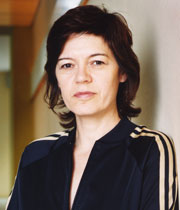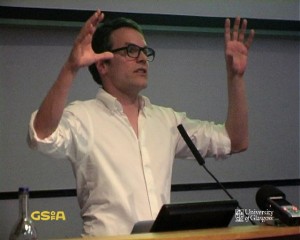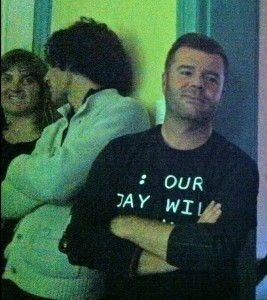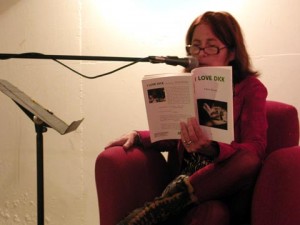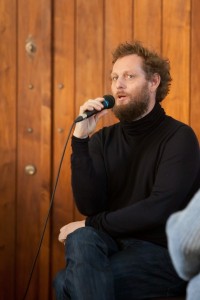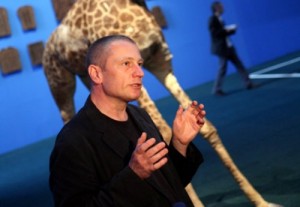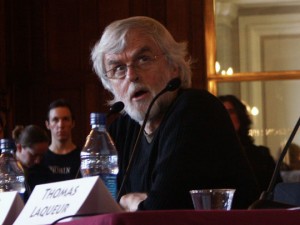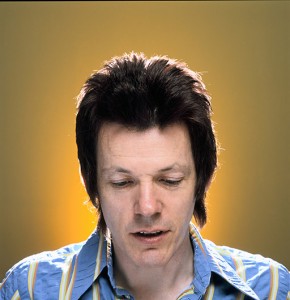A short line between three points
“Exhibitions are texts that make their private intentions public.”
This quote is loosely paraphrased from Paul O’Neill, the English curator-artist-theorist. I won’t pretend I’m up on his work because I’m not, at least not to any great extent.
But this idea caught me. I now realise why: it’s that word, private.
The idea that an exhibition, as opposed to an artwork or practice, might have ‘private’ intentions is not something we usually think about. How we might articulate this without falling back on didacticism (as in, ‘this is what the exhibition is about’) is surely a key question.
It’s an open one, as is this, which surely follows: How is it that an exhibition might constitute something other than an idea?
That word, ‘private’, also makes sense here in another way, now I think about it.
Small works are more intimate. When I curated this exhibition, ‘A Short Line Between Three Points’, I’d wanted for some time to do something that focused solely on small objects.
There were certain artists I was interested in, of course, and practices that traced certain lines of thought or, in the instance of Aubrey Tigan’s Honest Man Rigi, patterns of exchange.
But if I’m honest about it, it came down to intimacy: what you can hold in your hand, or thereabouts.
Small works draw you in; they limit the surrounding space. In this, you become enclosed in a fashion totally at odds with the expansiveness of large-scale practices. The bodily relation is different. It’s a very specific feeling, a kind of intensity that feels totally contingent upon size.
Process is part of this too. The three artists here – Karl Weibke and Matt Hinkley, alongside Tigan – enact processes that are intensely theirs; as different from (and similar to) each other as they are from others. This too draws you in.
We can also point to more pragmatic things when we talk about making exhibitions: that curators are bound to certain administrative, financial, and logistical realities, and that these also shape what it is they do.
It’s worth mentioning, in closing, that such parameters are almost endlessly variable. This is why there is never only one version of an exhibition, just as there isn’t a definitive edit of a text.
In this, an exhibition comes down to what’s possible in the moment. Or in this case, what you can fit in carry-on.
A short line between three points, (Matt Hinkley, Aubrey Tigan, Karl Weibke), Laurel Doody, Los Angeles, April 25 – May 21, 2015.
Exhibition text: A short line between three points.
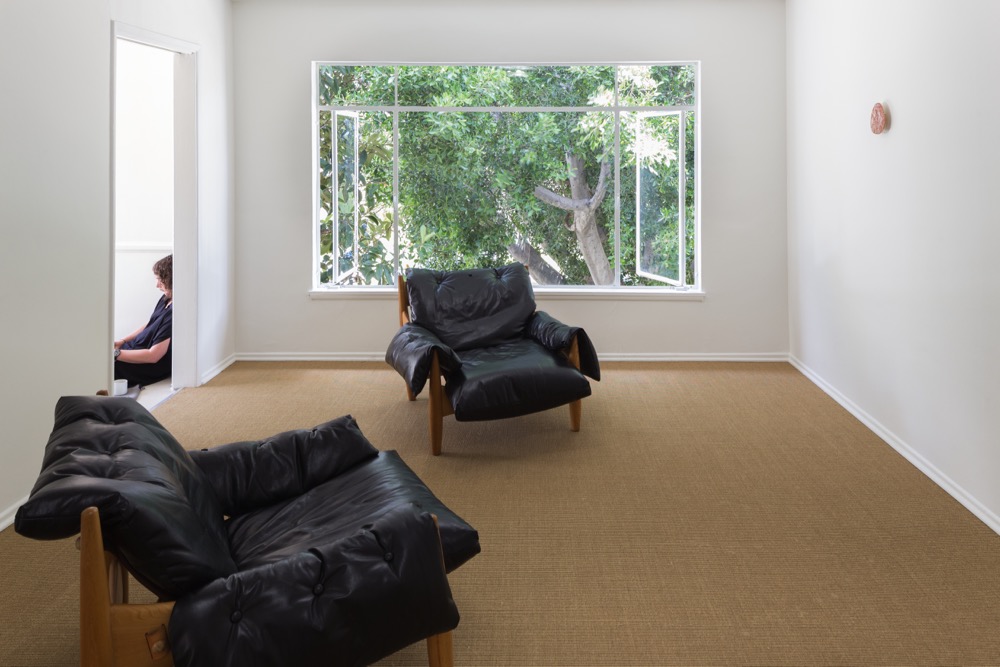

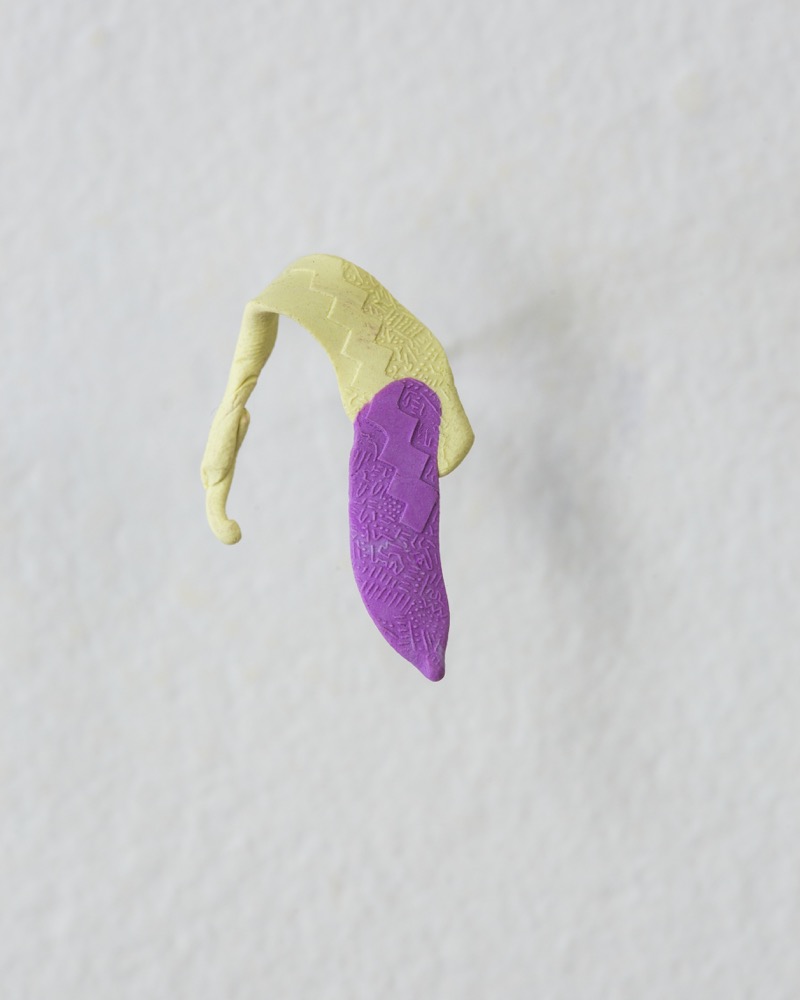
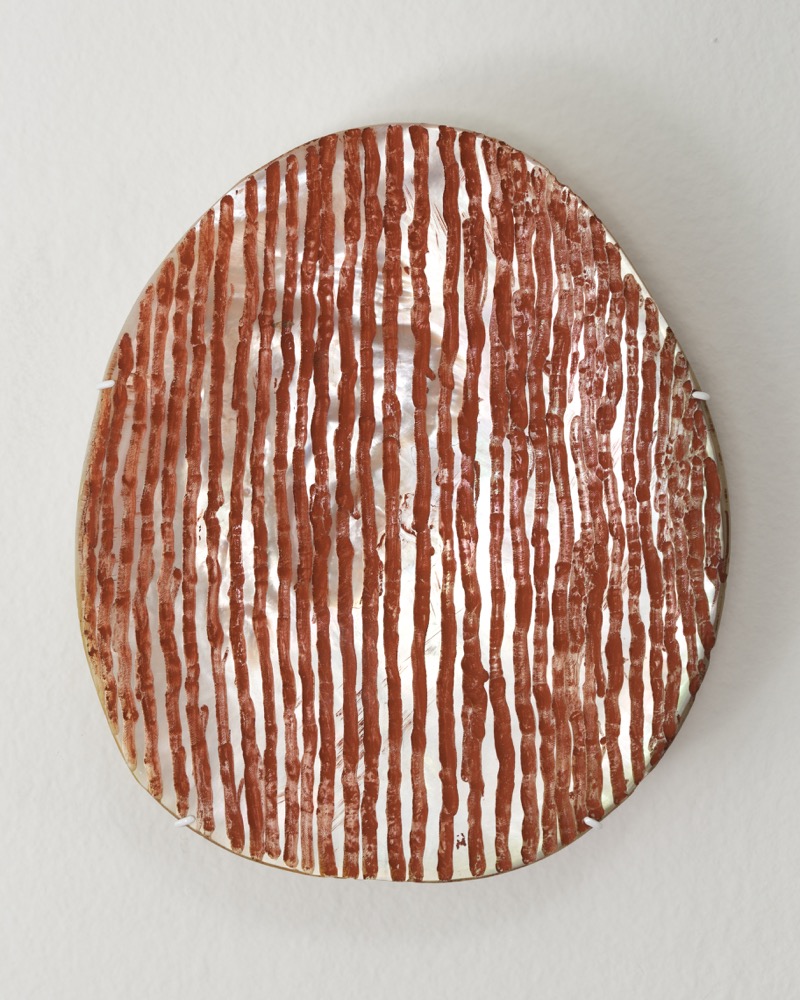
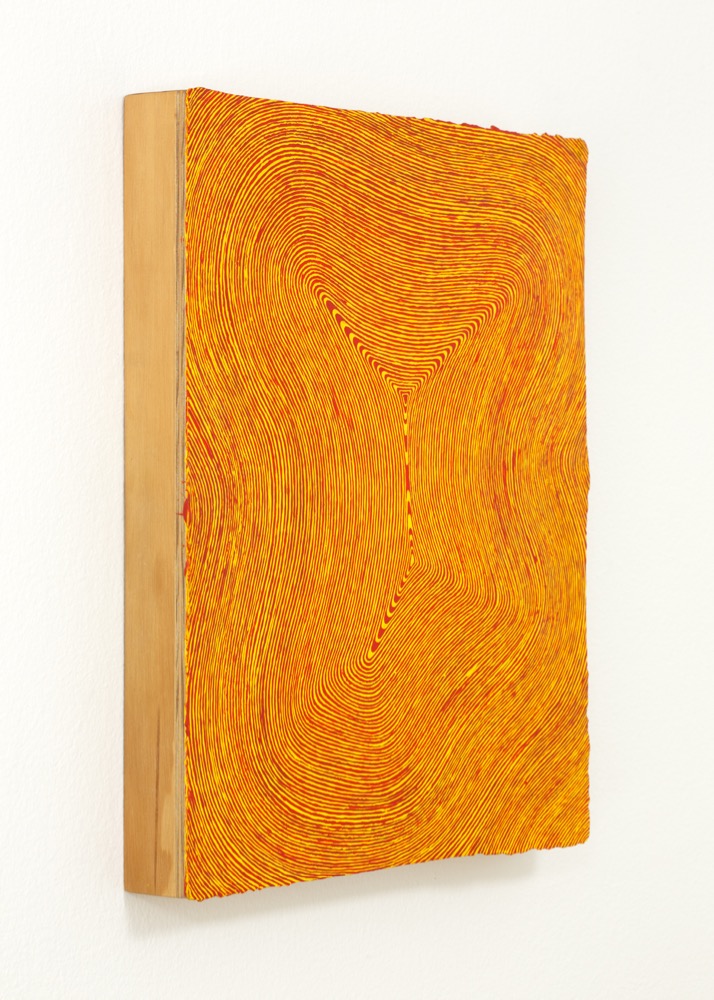
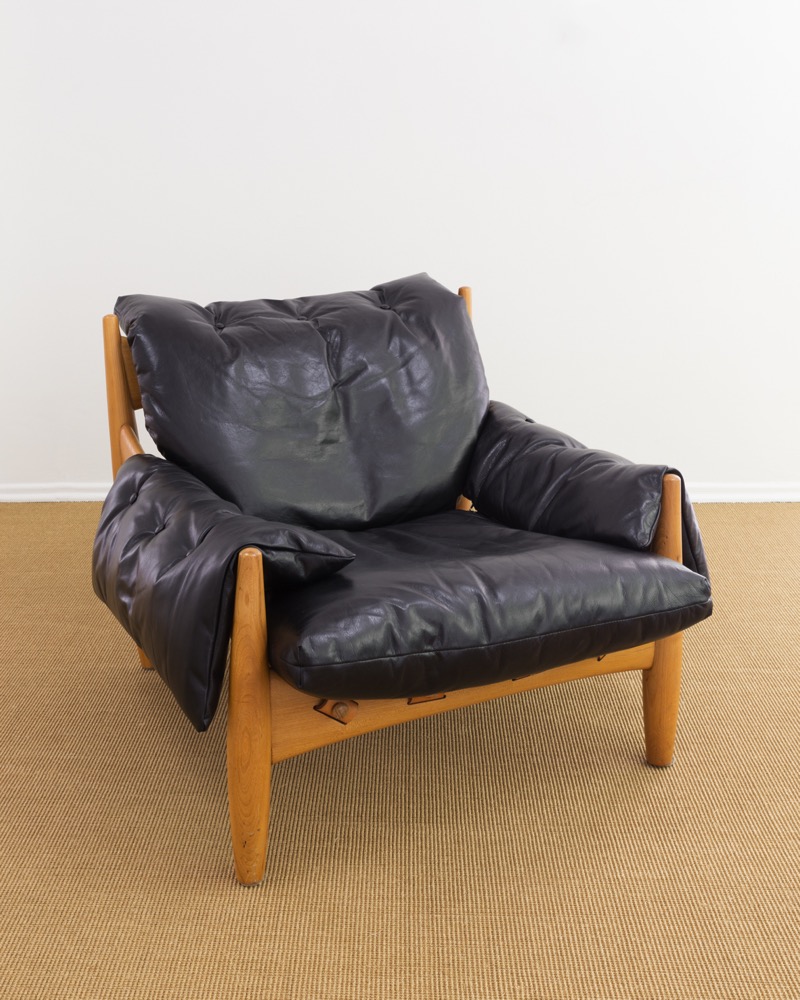
NOTE: I am indebted, of course, to the brilliant and indefatigable Fiona Connor. Laurel Doody is her (ongoing) brainchild: she invited me to take part in the program, provided the chairs and made the space beautiful, among many other things. Thanks also to Emily Anne Kuriyama, who wrote a closing text for the exhibition and to whose phrasing I owe something, particularly this line: ‘Each artwork is relatively small — no bigger than the sum of my two hands, palms up, held side-by-side’
